Originating from Osaka's central shopping area, Namba Area Audio Guide
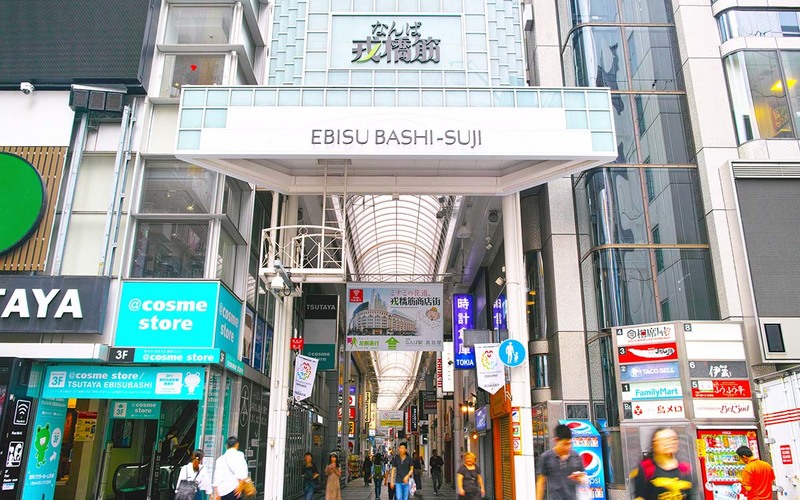
Namba area
During the Edo period, this area was full of restaurants serving noodles and tea houses catering to the people who came to pray at the Imamiya Ebisu shrine in central Osaka. This collection of shops is said to have been the start of the the “shopping arcade” that can now be found throughout Japan.
There are many popular places to explore along the central shopping avenue. On the North side, is the famous towering Glico sign, bridge, and giant mechanical snow crab. These are icons of Osaka and great photo spots that are popular with visitors.
The shopping area continues South to the famous department store Takashimaya. Everyday, over 200,000 people visit the area to shop, walk, and eat.
The reason this area is called Minami is because minami means “South” in Japanese and during the Edo period, theaters and adult entertainment zones were built on the “South” side of busy Osaka docks. The use of the katakana form of the word “minami” is said to have gained usage around 1954 after being used in a popular magazine.
The Ebisubashi Bridge was made of stone and escaped severe damage during the bombings of WWII, but was rebuilt in 2007 to reinforce its aging structure.
This is an area popular for celebrations, such as when the local Hanshin Tiger baseball team won their championship.
Come to the area during the day to enjoy the bustle and activity, or come at night to enjoy the culinary specialties and gaze at the beauty of the flashing neon lights.
There are two Minamis to enjoy.
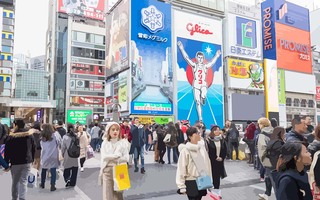
A Ebisubashi Bridge
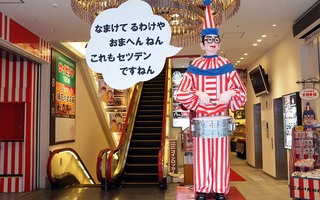
B Kuidaore Taro
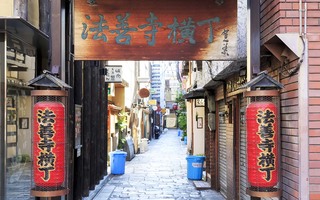
C Hozenji Yokocho
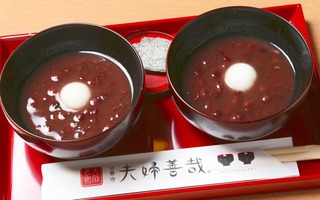
D Meoto Zenzai
A
Ebisubashi Bridge

Located in the middle of Osaka Minami's downtown area, Ebisu Bashi is the center of sightseeing where gorgeous neon signs have shined since before WWII.
It is believed that the bridge dates back to 1612 and was constructed in its first form when the creation of the Dotonbori canal took place. The name can be attributed to the nearby Imamiya Ebisu Shrine, whose worshippers would have crossed the bridge on their way to visit the shrine. In 1878, the bridge was reconstructed with iron after being made of wood for so many years. The bridge has been a center and showcase for many things over the years.Glass lamps were used on the bridge quite early on, when they were first introduced to Japan. There was also a famous clock placed on the bridge by the Shibuya Clock store. This is a bridge that has a long and colorful history tied closely with the development of Osaka as a city and hub of culture and food. In the early 1900s the bridge was remade of stone and started to become an iconic symbol of the area. The heavy foot traffic on the bridge attracted advertisers with their colored lights in the 1920s and then the illuminating neon lights in the 1930s. In 2007 the bridge was again reconstructed, but still holds its place as one of the most popular places to meet in the whole city. Walk across the bridge, but take a bit of time to absorb the atmosphere, history, and surrounding lights of Ebisubashi Bridge.
B
Kuidaore Taro

One of the most iconic images for Osaka is the smiling clown of Dotonbori, Kuidaore Taro.
The clown was originally placed outside a local Dotonbori store to attract customers, but has become nationally recognizable as an icon of Osaka .
After WWII the Kuidaore Restaurant was established by Rokurou Yamada and he had the vision to create a enjoyable dining experience, while increasing the spirits of the children and community around Dotonbori.
Yamada was inspired by the local Bunraku dolls that are the centerpiece of a traditional Japanese stage performance art. The inspiration of the character is based on a popular serialized novel called “Some Prefer Nettles” about the family dynamics of a family in the Bunraku business by the author Junichiro Tanizaki.
The original doll was completed as a side job by a designer of Bunraku dolls.
When the Osaka Hanshin Tigers won their championship, Kuidaore Taro was thrown into the river along with other fans who were celebrating the historical event by jumping from the Dotonbori Bridge.
In classic humorous Osaka fashion, there is now a sign that asks people not to throw him into the river.
It is said that Kuidaore Taro was the inspiration for the development of other moving mascot advertising characters all over Japan.
Kuidaore Taro now sits in front of the building just a few steps from Dotonbori bridge, having his picture taken with countless visitors and admirers.
Kuidaore Taro is a symbol of the perseverance, dedication, and joyous spirit of the people of Osaka.
C
Hozenji Yokocho

The Hozenji Yokocho is a wonderful area almost hidden in the back alleys across from Ebisubashisuji, but giving you the opportunity to see and feel something special while in Osaka.
The alleyway is one of the most interesting of the many in the Osaka area.
There are two alleys, 80m in length and about 3m in width, lined with bars, okonomiyaki stores, Fried Gushi stick restaurants, and much more.
The alleyway started along the path to the Hozenji Temple.
The original stores and temple were burned down during the bombings of WWII, but were quickly rebuilt.
The area is the setting for a famous novel by Sakunosuke Oda named “Meoto Zenzai.” The story was later turned into an award winning film and is about the relationship of a local Osaka girl and a spoiled man set in the alleys around Hozenji Temple.
A moss covered Fudo Buddhist statue that survived the WWII bombings is a popular Power Spot, and is now visited by people looking to have they prayers answered.
Each person makes their wish and pours some water over the statue, creating the perfect conditions to grow the moss over this icon of Osaka.
It is said that the poured water carries your wishes, and when they eventually flow out through the moss your wish will come true.
This is a place where people to come to find help and guidance through the hard times in their lives.
The statue is rumored to have a handsome face, but is heavily covered in moss so we may never know.
Come share your troubles while imagining the face of the enshrined god below at this hidden Osaka gem.
D
Meoto Zenzai

The alleyways of Osaka are filled with stories and places to eat, as different people with different experiences come to congregate every evening.
There are many shops along the street leading to the Hozenji Temple that catered to the people who came to pray.
In 1883, under the wisteria tree of the Hozenji Temple, a shop started selling sweets and eventually became the “Meoto Zenzai Ofuku” store.
Rather than sell a large portion in one bowl, the store served portions in two bowls, improving customer satisfaction because it looked like they received more.
This is a classic example of the ingenuity and imagination of the Osaka merchant. The dish became very popular.
The store also became the setting for one of the most famous Osaka based stories, Meoto Zenzai.
It was written by Sakunosuke Oda and set in Hozenji Yokocho.
The serial novel and later film is also known as “Hooray for Marriage” in English and was a popular hit in 1965, winning awards for best director, best actor, and best actress.
In 1964, the shop moved to its present location.
Because the orders are served in two bowls, a local legend took root that if the order was eaten by two people together, the bond between the couple would become stronger and more harmonious.
The main sweet sold at the store is a delicious traditional Japanese desert of red azuki beans simmered with sugar.